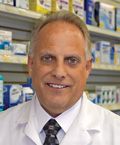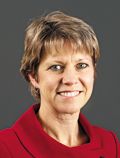ACA opens the door to value-based care
Pharmacists are now being included in care teams wherever outcomes are being tracked. Provider status is only a matter of time.
The Affordable Care Act (ACA) has changed the ways we envision, provide, evaluate, and pay for healthcare. Pharmacists are conducting annual wellness visits for patients, managing chronic care, and providing transitional care management and other services they could only imagine in 2010. And they are getting paid for services not directly related to dispensing.
An era of accountability

Brian IsettsIn Minnesota, about 30% of last year’s pharmacy graduates provide direct patient services, and these opportunities are increasing, due in part to ACA.
“We are entering an era of accountable medication use,” said Brian Isetts, RPh, PhD, BCPS, pharmacy professor at the University of Minnesota College of Pharmacy in Minneapolis. “For the first time ever, providers who don’t help patients manage their medications and then have patients readmitted or suffer less-than-optimal outcomes are being penalized. The kind of pharmaceutical care that used to be derided as ivory tower fantasy is becoming reality.”
The ACA doesn’t endorse pharmaceutical care. Pharmacy-related strategies such as medication therapy management (MTM) are barely mentioned. Instead, the ACA creates a concept of value-based care that focuses on improvement of patient outcomes rather than on simple provision of services.
See also: The transformation of pharmacy in a rapidly changing retail environment
The shift in FFS
In January, CMS announced that it will move 30% of all provider fee-for-service (FFS) payments to value-based programs such as accountable care organizations (ACOs) by the end of 2016. Half of FFS will move to value-based programs by 2018.
One reason for the shift is the recognition that drug-related morbidity and mortality have reached crisis proportions. Medication harm has been the single largest category of hospital acquired conditions and the most common cause of readmissions, Isetts noted.

Jennifer CostelloRoughly 10 people die from preventable medication-related harm in the United States every hour of every day. As health systems, practices, and providers are held accountable for medication-related adverse events and ineffective drug therapies, it makes sense to bring in the medication experts to help improve outcomes - and reimbursement.
“Pharmacists are now being included in care teams wherever outcomes are being tracked,” said Jennifer Costello, PharmD, BCPS, BC-ADM, assistant director of clinical services for Barnabas Health in Livingston, N.J. “One of the major goals of the ACA was to join forces at the provider level to improve outcomes and resource utilization. It is a dramatic change to be sought out as a needed member of the care team.”
See also: Pharmacist provider status gains traction
Breaking down silos
Most of the ACA’s new patient-care-related programs debuted at the health-system level. ACOs and other value-based delivery models are intended to improve population health using quality measures such as readmission rates and medication adherence rates.
Measures from groups such as the Pharmacy Quality Alliance feed directly into quality metrics used by CMS to evaluate provider Star Ratings and other quality scores, Costello said. About a third of CMS quality metrics involve medication-related measures such as adherence rates, use of indicated drug interventions, medication regimen reviews, and the like.

Kevin BoesenIf that sounds like MTM under Medicare Part D, it isn’t. Part D requires MTM, but fails to hold prescription drug plans or providers accountable for drug-related patient outcomes.
“We built our business around the MTM requirement,” said Kevin Boesen, PharmD, chief executive officer of SinfoniaRx, an MTM provider in Tucson, Ariz. “We support more than 300 Part D plans, more than five million lives. But that kind of MTM only touches 10% to 15% of the population. The Star Ratings and other quality-based programs that came with the ACA have to touch as many patients as possible. For the first time, providers and plans are responsible for outcomes.”

Randy McDonoughProviders aren’t just responsible for outcomes; they get paid for outcomes. Better outcomes get better reimbursement. Where Part D reinforced existing siloes by carving out drug spend, the ACA breaks down some of those silo walls by making providers responsible for the entire cost of care as well as for outcomes.
“You can’t think cheap any longer and prosper,” said Randy McDonough, PharmD, MS, CGP, BCPS, co-owner and director of clinical services for Towncrest and Medical Plaza Pharmacies in Iowa City, Iowa. “You have to think outcome and performance. Payers are shifting their dollars to providers and networks that can provide and document quality.”
Anywhere and everywhere
Pharmacists fit into the new value- and quality-based landscape anywhere and everywhere that medications are used.
“No one in the healthcare field has more clinical training and expertise in pharmacology than pharmacists,” said Daniel Buffington, PharmD, MBA, Clinical Pharmacology Services, Tampa, Fla. “For every dollar spent on medication therapy management or pharmacists’ clinical services, the healthcare system saves significantly more dollars in return. That is in addition to the clinical improvements in patient outcomes.”
The advent of ACOs and other value-based delivery models has helped health systems, hospitals, and physician practices recognize the role and value that pharmacists can bring in reducing adverse drug events and related readmissions, and in improving medication adherence, thus improving outcomes and reducing overall healthcare costs. Many health systems have increased pharmacist head counts to support their growing ACO programs.
At Barnabas, for example, pharmacy manages an outpatient anticoagulation clinic. Pharmacists are responsible for managing patient regimens, improving outcomes, and helping physicians select the most appropriate anticoagulation agent. Pharmacists play similar hands-on roles in managing diabetes, asthma, lipids, cardiovascular disease, and other chronic complaints.
Bringing pharmacist expertise to patient care routinely improves outcomes along with more appropriate medication use and lower adverse event rates. Declining admission and readmission rates add to an overall drop in the costs of care in these specific patient populations.
New programs, new codes
As part of its move to value-based care, CMS has created new Part B programs and reimbursement codes that fit easily into pharmacy practice.
Transitional care management. Transitional Care Management (TCM), is one of the most clinically and financially valuable services. TCM is designed to reduce 30-day readmission rates by facilitating the transition from hospital to community care and reconciling medication needs between hospital and community settings.
“Our nurse practitioner-led TCM program wanted a pharmacist on every team,” Costello said. “They recognize the difference that medication management can make in reducing the 30-day readmission rate.”
Barnabas uses staff pharmacists for TCM, but other health systems and provider networks contract with independent pharmacists or pharmacy providers. CMS rules call for TCM and similar service reimbursements to be shared with pharmacists and other providers, incident to the services billed by the physician or practice.

Sandra LealAnnual wellness visits. Also new are annual wellness visits (AWV) to develop or update a personalized plan to prevent disease and disability. The AWV includes creating or updating a list of providers and medications; evaluating individual risk factors, treatment options, and personalized health advice; detection of any cognitive impairment; medical and family history review; screening schedule for appropriate preventive services; and routine measurements such as height, weight, and blood pressure.
“If you do a thorough job, you have a baseline to make subsequent interventions to keep patients healthy,” said Sandra Leal, PharmD, MPH, vice president for innovation at SinfoniaRx.
The potential impact is enormous. A family medicine practice in Asheville, N.C. and the University of North Carolina Eshelman School of Pharmacy found that reimbursement for wellness visits could cover a $120,000 annual salary in about 40% the pharmacist’s available working time. The wellness visit is in addition to the welcome-to-Medicare visit with a Part B provider.
Chronic care management. Chronic care management (CCM) could have been tailored for pharmacists. Medicare patients with two or more chronic conditions can be seen up to monthly for as little as 20 minutes for care coordination, medication recommendations, medication adherence help, and other interventions intended to prevent their conditions from worsening and leading to hospitalization. A physician must conduct the initial visit, but subsequent CCM can be handled by a pharmacist or other provider, either in person or by phone.
“The idea is that if we are doing CCM right, we will delay progression and reduce overall resource utilization,” Leal said. “At a reimbursement of $42 per patient per month, you can start creating a new sustainability plan pretty quickly.”
Getting started
Pharmacists can join a practice, provide services to multiple practices, or join a larger provider organization. Leal began creating pharmacist patient-care programs with a local health center, El Rio, before joining SinfoniaRx.

Anne Burns“Health centers are great partners,” she said. “They are always looking for new ideas to better serve their patient populations in very targeted ways. Whatever the setting, you can provide a realistic business model for providers that improves care and outcomes, and integrates clinically with what they are already doing.”
Most pharmacists moving into patient care are embedding themselves into an existing primary care or specialty medical practice, said Anne Burns, senior vice president for professional affairs at the American Pharmacists Association. Practices have the Part B providers and CMS billing expertise, while pharmacists have the medication expertise.
Projects and programs
Other pharmacists are joining demonstration projects funded by the Center for Medicare and Medication Innovation or state programs.
• In Hawaii, a hospital pharmacist-community pharmacist program, Pharm2Pharm, is improving transitional care management for older residents in three rural counties.
• The University of Southern California is integrating pharmacists into the front line in safety-net clinics in order to improve adherence and confirm the appropriateness and safety of medication use, with the goal of reducing avoidable hospitalizations or ER visits.
• Virginia is using pharmacists to improve health for at-risk patients in 23 rural counties. A collaborative practice model gives pharmacists access to electronic medical records to coordinate care and improve outcomes for patients with multiple chronic diseases.
• In Wisconsin, pharmacists are working with prescribers to reboot prescription drug therapies using evidence-based standards of care for diabetes, chronic heart failure, asthma, and geriatric syndromes. That comes on top of the Wisconsin Pharmacy Quality Collaborative, funded by Medicaid and private payers, which brings pharmacists into comprehensive medication reviews by appointment with patients.
The MTM continuum
Medication review is familiar ground for McDonough. With nearly 20 years of practice, he has developed a system of continuous MTM, plus a software package, PharmClin, to document the results. And he is doing it as part of the dispensing process.
“MTM isn’t an event, it is a continuum,” he said. “We call it continuous medication monitoring. We review each and every patient who comes into our pharmacy, every time they come in. So instead of waiting to do a comprehensive medication review, we have an ongoing story for every patient.”
His two pharmacies are documenting more than 2,000 interventions every month, McDonough continued. Trained pharmacists can assess a patient in three to five minutes, he said, fast enough that the patient doesn’t notice and with enough detail that major payers are paying for the quality difference.
“In a pay-for-performance world, you don’t just have to improve care, you have to document it and talk about it,” he said. “Payers are looking for providers who can improve patient outcomes. Show them the evidence and they will respond.”
Update: Provider status

Stacie MaassDespite a sometimes-bewildering array of new services for which pharmacists can be paid, the ACA still relies on Medicare Part B for its definition of provider. Nurse practitioners, physician assistants, and other nonphysician healthcare professionals have been added to the Part B list of recognized providers. Pharmacists are still fighting for their place on the list.
The Centers for Medicare and Medicaid Services clearly recognizes the value that pharmacists bring, but achievement of provider status requires legislative change, said Stacie Maass, BSPharm, JD, senior vice president for pharmacy practice and government affairs at the American Pharmacists Association.
“Value-based models created by the ACA introduce new delivery models like accountable care organizations and patient center medical homes,” she said. “But even with new delivery models, the ACO statute refers back to provider status as defined in Part B. Pharmacists can be part of these new models, but reimbursement still depends on their relationship to a Part B provider.”
Two bills introduced in January, H.R. 592 and S. 314, the Pharmacy and Medically Underserved Areas Enhancement Act, add pharmacists to the provider list. APhA and other pharmacy organizations strongly support both bills. Similar legislation was introduced in the House in 2014 but died in committee.